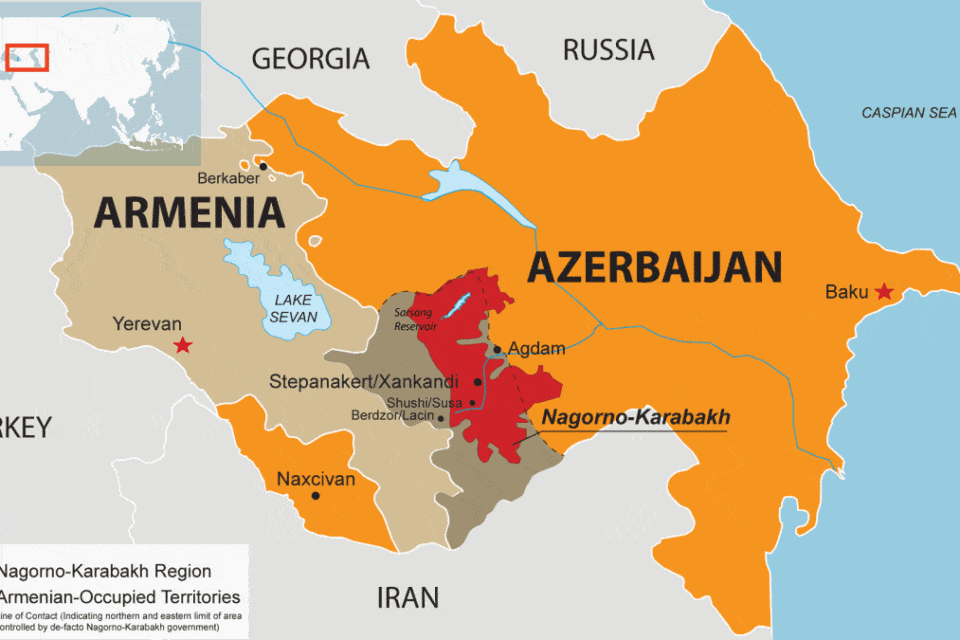Help our local partners realise their vision of hope for their communities

At the centre of the dispute over Nagorno Karabakh (Artsakh) is ethnicity. Both Armenians and Azeris (Azerbaijanis) consider the region to be historically and culturally theirs. Ethnic tensions in the region are based on centuries of conflict and still run high to this day.
The most recent disputes occurred due to the fall of the Soviet Union and the resulting independence of Azerbaijan and Armenia. The Soviet Union established the Nagorno Karabakh Autonomous Region within Azerbaijan in the 1920s. It is estimated at this point that the population of Nagorno Karabakh was 95% ethnically Armenian. However ethnic Azeris lived in the region whilst ethnic Armenians lived within the borders of Azerbaijan.
Under Soviet rule, fighting between the two countries was limited and confrontations were rare but as the Soviet Union began to collapse, control over the region, Azerbaijan and Armenia slipped.
On the 13th February 1988, Artsakh Armenians began demonstrating in their capital, Stepanakert, in favour of unification with the Armenian republic. Six days later, marches of support occurred in Armenia’s capital, Yerevan. On the 20th February a vote was passed to request the transfer of the region to Armenia. This unprecedented action brought tens of thousands to the streets of Stepanakert and Yerevan but the request was swiftly rejected by Soviet officials in Moscow. By the 22nd February, the first direct confrontation of the conflict occurred, paving the way for violence against minorities on both sides of the Armenia-Azerbaijan border.
By 1991, Armenia and Azerbaijan had obtained independence from the Soviet Union and intense fighting broke out, filling the military and governmental vacuum that had been left behind. In the same year Nagorno Karabakh declared its independence which was not accepted by the international community. By the end of 1993, thousands had been killed and more injured by fighting in the region. Ethnic Azeris fled Artsakh and Armenia while ethnic Armenians fled the rest of Azerbaijan. As with most conflicts many innocent people were harmed on both sides and thousands were displaced, forced to flee their homes in search of security and the chance to live peacefully.
By May 1994, Armenia acknowledged Nagorno Karabakh, for the first time, as a third party in the war and started negotiations with the Artsakh authorities. As a result, a ceasefire between Armenia and Azerbaijan was reached on the 12th May 1994. This set out the borders of Armenia, Azerbaijan and Nagorno Karabakh although they are still hotly contested and the source of much aggression to this day.
The Minsk Group was established soon after the ceasefire to work toward the creation of conditions in which a conference on Nagorno Karabakh between Armenia and Azerbaijan can take place. The Minsk Group visit the region often and conduct high-level talks with the parties to the conflict. The group is currently chaired by representatives from Russia, France and America with permanent group members from Belarus, Germany, Italy, Sweden, Finland and Turkey joining the Azerbaijani and Armenian delegates. Negotiations are still handled by the group although a peace deal has yet to be agreed. The group have however had some success, most notably and recently helping to agree a ceasefire during the COVID-19 pandemic.
Ultimately, whilst unstable ceasefires have reduced casualties and fighting in recent history, the conflict is still ongoing. Approximately 30,000 people have died, hundreds of thousands of ethnic Azeris have been displaced and the region’s lack of international recognition as an independent state has resulted in a lack of foreign investment and international aid. No peace deal has ever been signed and violence has resumed sporadically in the region. Despite the ceasefire, fatalities and armed conflicts have continued between Armenian and Azerbaijani soldiers.
Recent examples include violent, fatal clashes in April 2016, which lasted four days before a ceasefire was agreed. Moreover, the region has been shelled sporadically since the ceasefire of 1994 and civilian and military casualties have occurred on both sides. In 2017, two civilians, a young girl and her grandmother, were killed by an Armenian shell in a small Azerbaijani village.
It has been the people of Nagorno Karabakh and the surrounding areas who have suffered the most during this conflict and they still require humanitarian support. Whilst the conflict continues and the politics of the region remains unstable, it is important to remember the citizens and the help they require now and in the future.
To find out more about Nagorno Karabakh (Arstakh) and read about HART’s work in the region follow this link https://www.hart-uk.org/locations/nagorno-karabakh/
By Max Elgot